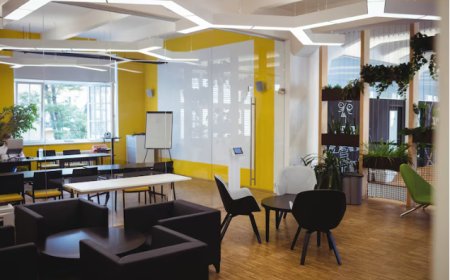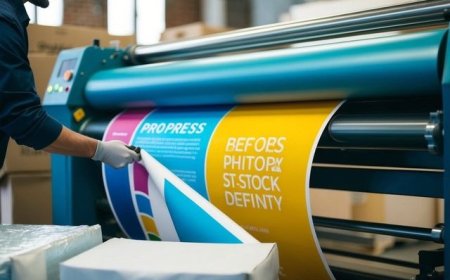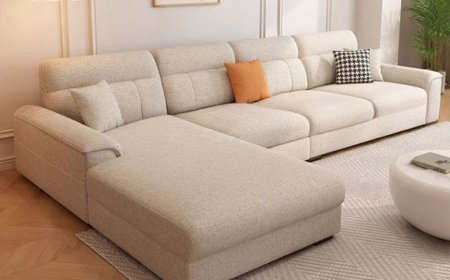Enhance Your Workspace with Modern Office Furniture Solutions

Office furniture plays a critical role in shaping the functionality, aesthetic appeal, and overall productivity of any workplace. Whether youre running a corporate office, a home-based setup, or a co-working environment, the right office furniture is essential to support comfort, efficiency, and professionalism. From ergonomic chairs and height-adjustable desks to collaborative workstations and storage cabinets, todays office furniture market offers an extensive range of options to accommodate various working styles and space requirements. The growing demand for wellness-focused work environments has also brought attention to how furniture influences posture, mood, and employee satisfaction. Companies are no longer just buying desks and chairsthey're investing in thoughtfully designed office ecosystems that reflect their brand values and employee needs. In this blog, well explore the latest trends, must-have office furniture items, and smart tips for choosing furniture that boosts productivity and enhances your office space.
The Importance of Choosing the Right Office Furniture
A well-designed office with quality furniture goes far beyond aesthetics. It impacts employee comfort, promotes better health, and directly influences work performance. When furniture aligns with the physical and psychological needs of employees, it creates a conducive environment for focus, creativity, and collaboration. Ergonomic chairs, for instance, are engineered to support the spine and reduce stress on joints, preventing common workplace injuries like back pain and carpal tunnel syndrome. Sit-stand desks allow users to alternate between sitting and standing, promoting movement throughout the day. Additionally, collaborative furnituresuch as modular seating and open-plan workstationsencourages team interaction, making it easier to brainstorm and communicate effectively. Choosing the right office furniture is not a one-size-fits-all task; it involves considering the nature of your work, available space, employee preferences, and corporate culture. In many ways, furniture is a silent partner in every productive workday, making it a strategic investment rather than a simple expense.
Essential Office Furniture Every Workplace Needs
Creating a functional and inviting office starts with equipping the space with essential furniture items. Desks are the cornerstone of any workstation, and they come in various shapes and sizes to suit individual rolesexecutive desks for management, benching systems for team environments, and compact desks for small office rooms. Chairs should be ergonomically designed with lumbar support, adjustable armrests, and breathable materials to ensure long-term comfort. Storage solutions are another critical component; filing cabinets, bookshelves, and under-desk drawers help maintain a clean and organized space. Conference tables and meeting room chairs foster group discussions and presentations, while reception furniture sets the tone for visitors and clients. Additionally, adding breakroom furniture such as lounge chairs and coffee tables contributes to a well-rounded office setup that supports both work and relaxation. Each item in your office furniture layout should serve a purposebe it functionality, comfort, or style.
Modern Trends in Office Furniture Design
Todays office furniture trends reflect a blend of innovation, sustainability, and user-centered design. One of the most notable trends is the rise of flexible furniture that adapts to different tasks and layouts. Modular workstations can be reconfigured to accommodate growing teams or changing needs, while mobile desks and rolling storage units add mobility and versatility to the space. Minimalist aesthetics featuring clean lines and neutral color palettes are in high demand, creating clutter-free environments that encourage focus. Sustainability has also become a priority, with many companies opting for furniture made from recycled materials or certified wood. Moreover, biophilic design is influencing furniture choices, encouraging the integration of natural elements like wood textures, greenery, and light. Technology integration is another exciting trend; many office desks now come with built-in power outlets, cable management systems, and wireless charging stations. These design innovations reflect the evolving needs of modern workforces who value comfort, convenience, and eco-consciousness.
Tips for Selecting the Best Office Furniture for Your Space
Selecting the right office furniture starts with assessing your space and understanding your team's needs. Begin by measuring your office layout to ensure furniture fits comfortably without crowding. Identify areas that require specific furniture typessuch as private offices, collaborative zones, and quiet corners for focused work. Prioritize ergonomics by selecting chairs and desks that support good posture and offer adjustability. Choose materials that are durable, easy to clean, and complement your office design. For example, mesh chairs offer breathability and support, while laminate desks provide a sleek and sturdy surface. Dont forget about aestheticscolors and styles should align with your brand image and promote a welcoming environment. Budget is also a key consideration, but its wise to invest in quality items that last longer and deliver better comfort. Lastly, involve employees in the decision-making process; their feedback can help you select furniture that meets real-world needs and boosts satisfaction across the board.
Office Furniture for Remote and Hybrid Workspaces
With the rise of remote and hybrid work models, the demand for home office furniture has skyrocketed. People are transforming corners of their homes into productive work areas that require just as much attention to ergonomics and organization as a corporate office. Essential home office furniture includes a compact desk, an adjustable chair, proper lighting, and efficient storage solutions. For small spaces, foldable desks or wall-mounted workstations can maximize utility without sacrificing comfort. A dedicated workspace at home not only improves concentration but also helps maintain a healthy work-life balance. Employers are increasingly offering stipends or guidance for home office setups, recognizing the importance of furniture in sustaining remote productivity. Hybrid workers, who switch between home and office environments, benefit from portable furniture items and accessories like laptop stands, monitor risers, and ergonomic footrests. The versatility and adaptability of office furniture are more important than ever in supporting dynamic work arrangements.
Conclusion: Invest in Quality Office Furniture for a Better Work Experience
In conclusion, office furniture is far more than just functional decorits a vital element of workplace design that influences comfort, productivity, and employee well-being. From ergonomic seating to modular workstations and sustainable materials, modern office furniture reflects the changing landscape of work and the growing emphasis on flexibility, collaboration, and wellness. Whether youre setting up a new office or revamping your current space, taking a thoughtful approach to furniture selection can yield long-term benefits for your team and your business. With so many innovative and customizable options available, theres no reason to settle for outdated or inefficient office setups. Choose pieces that inspire focus, promote health, and support your organizations goals. By doing so, youre not just furnishing a roomyoure shaping a space where ideas thrive and people do their best work. For premium-quality furniture solutions designed to elevate any workspace, trust office furniture to provide comfort, style, and functionality in one seamless package.





































